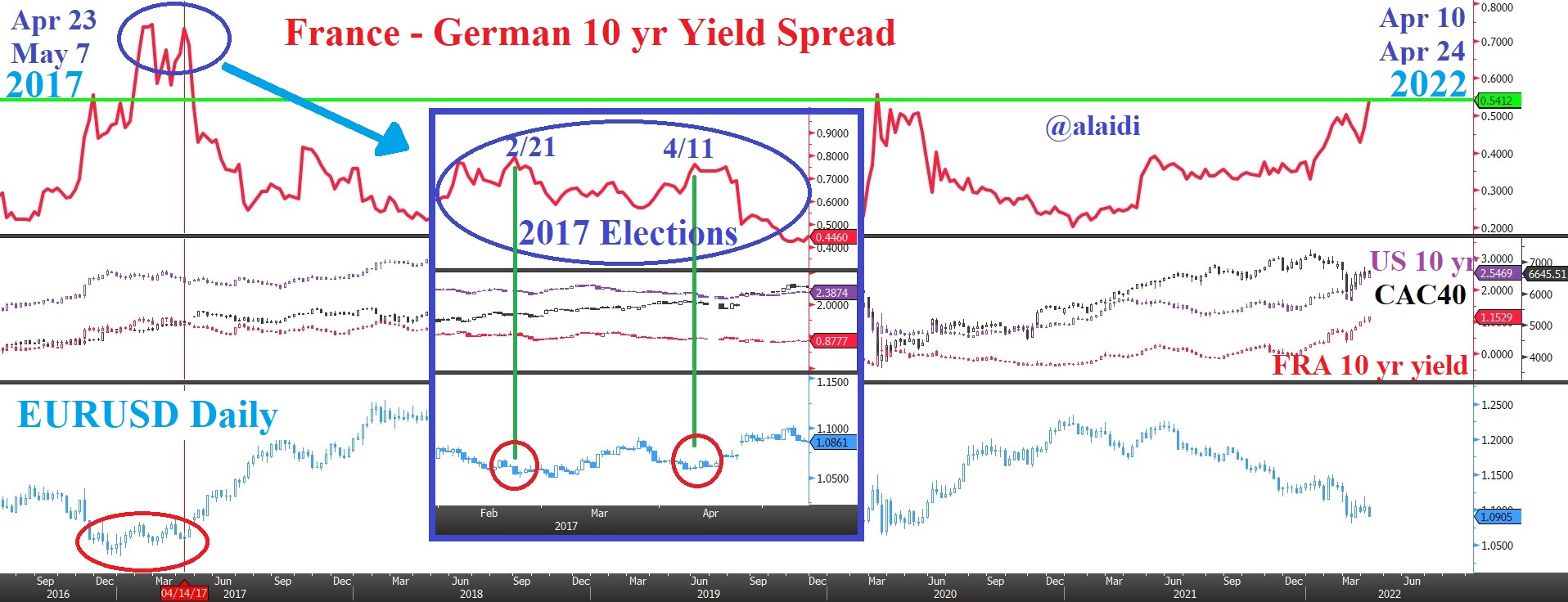French presidential elections are due this month, which means fresh selling of French government bonds on the usual fear of a far-right candidate closing ground behind the pro-European centrist candidate.
The far-right candidate is once again Marine Le Pen, while the more accepted candidate is the incumbent president, Emmanuel Macron. Just like in April 2017, the spread of French 10-year yields over its German counterpart, broke above 0.50%, a level last seen during the global bond market rout of March 2020 and before that, the 2017 French elections.
Why is this happening again? Are the fears more substantial this time?

Deepening Le Pen's Disastrous Market Implications
At time of writing, polls put Macron in the lead with 27%, versus 23.5% for Le Pen, making inevitable a repeat run-off between the two in the 2nd round on Apr. 24. Markets fear that the anti-Euro Le Pen—who despite having dropped her insistence for France to leave the EU—remains opposed to free trade and open borders, as well as coordinated EU spending and debt programs.
Especially negative for the markets is Le Pen's opposition to the EU's coordinated response to Russia's invasion of Ukraine. Any sign of her advancing further in the polls, could risk a breakdown in the EU's anti-Russia stance and broaden the attack on France sovereign bonds and commercial banks.
Unlike in 2017, Le Pen is drawing votes from backers of Eric Zemmour, an anti-immigration, pro-hate speech candidate, who makes Le Pen seem centrist.
The above chart highlights the similarity in the ascent of the FRA-GER spread between the 2017 and 2022 elections, with the center box zooming in on the spike of 2017. While 0.5% appears as a staunch resistance, it seems a break towards 0.70% is plausible, which could force EUR/USD to retest the all important 1.0800 support.
Stay tuned for the 1st round on Apr. 23, followed by the 2nd round on May 7.
